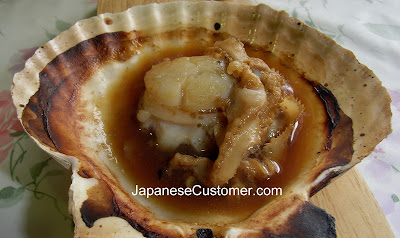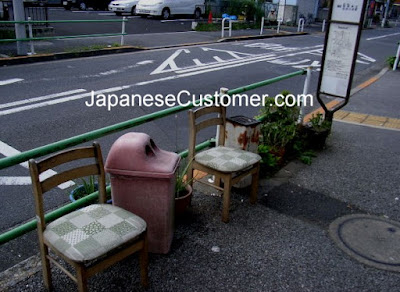Photo: Japanese students at assembly
According to research published recently by IDP Education Australia
“Asia will dominate the global demand for international higher education by 2025; Asia will represent some 70% of total global demand”.
Japan stands out as one of the most mature and stable economies in the region. From a recruiter’s point of view though Japan has always been considered a difficult recruitment market due to the high costs of visiting the market, doing business, and lack of access to market information. These factors are slowly changing and Japan is becoming more accessible and user-friendly as compared to many other student markets.
Recent signs of growth have been seen and reflect that the economy may be finally recovering from 15 years of stagnant economic growth. The rise of indicators such as the Nikkei 225 index has helped push this feeling throughout the marketplace and consumer sentiment has followed with small rises in the Consumer Price Index and inner-city real estate prices.
Japanese students enjoy studying abroad and each year thousands of them venture to an array of different countries to gain new skills. Based on recent research undertaken by MEXT (Ministry of Education, Culture, Sports, Science, and Technology), the top five study destinations for Japanese students in 2005 were the USA, China, Europe, the United Kingdom, and Australia.
An important question to consider from an institutional viewpoint is why do Japanese students study abroad when there are currently over 500 government accredited Universities throughout the whole of Japan that offer a range of specialized courses in both Japanese and English formats.
Keiko Tanikawa, Managing Director of ISCS, believes that
“Japanese students are picking courses that are a complete package, for example, they select a course that is easy to enter, provides international recognition (so the qualification can be recognized in Japan and worldwide if they decide to stay in-country), and has work placement. So it’s easier to get a job”.
This view is echoed by Makoto Sanada, Student Adviser at MTSC, a Japanese education agency,
“Japanese students want a qualification, something that shows that they are licensed in the subject”.
Following recent high levels of unemployment amongst university graduates, many students are looking to further develop their overall skills including English, and specialized programs including MBA courses. Japanese companies have been cutting workers, so we have begun to see the demise of the corporate samurai.
"Young people are in no doubt about the direction employment is taking. They get the connection between useable skills and job security" according to Dr. Greg Story of Austrade.
The changing marketplace provides insights that can be helpful for education institutions and recruiters, these include the increase in “Freeters” and “NEETs”, changes in the types of courses being studied, and employer needs for job-ready employees, and the changing role of English.
The term “Freeter” is a Japanese word that has been made by combining two words, the first word, "free" from English, and the second word “Arbeiter” a German word relating to work.
The meaning is aimed at young people primarily between the ages of 15 and 34 years of age who have graduated from education but who engage in part-time work.
The term is used to describe both young men and women and seems to have a rather negative connotation with older members of society who are relying on the young to pay for the national pension system.
Figures released by MEXT show that the number of “Freeter’s” in Japan has more than quadrupled in the past 20 years” from 1982 to 2003.
The Japan Institute of Labor classifies “Freeter’s” into three distinctive and separate groups these include the moratorium type that wants to wait before starting a career.
This type can be linked to Western University students who take a year off after completing their studies and may travel before starting their careers.
The dream pursuing type. “Freeter's” who fall under this category may attempt to work in glamour fields such as show business and the no alternative type, may remain in part-time employment as they have no other choice of jobs that match their skills or experiences.
Recruiters could repackage an existing course or develop a brand new course that allows “Freeter's” a chance to upskill or to further develop skills learned in part-time work.
Young people not in education and training or “NEETS” represent a sizeable market in the Japanese education market. According to the government, there are about 850,000 “NEETs” in Japan.
“NEETS” have been so described as they are seen to live off allowances provided by their parents and are undecided about career and their role in society.
It is felt that they lose motivation and self-confidence by not actively participating in society. According to Saori Kan of the Daily Yomiuri in the article,
"Society needs to get serious about NEETS"
she outlines that at present,
“About 520,000 people under the age of 35 were considered NEET's as of the end of 2003”.
Free weekly employment magazines are now important mediums for a large number of young people in Japan.
Education institutions have an opportunity to develop courses and training to meet the needs of these young Japanese and to help them make a start or a restart toward their life’s journey.
Over the past thirty years, the courses selected by female university students have changed dramatically as seen in MEXT research.
For example: in 1970 the number of females taking Social Science courses at University was 11.9% whereas in 2004 the number had risen to almost 30%. Changes have also been noted in Agriculture based courses which have increased by 1.6% and Engineering up 4% over the same period.
These changes provide insights for institutions to develop individual marketing plans based on gender whereby individual courses are targeted specifically to the need of the student.
The message developed to attract a male Japanese student to enroll in an Engineering course would be different and unique compared to that developed for a female student.
Recruitment fairs in Japan are the battleground for recently graduated Japanese students who have returned home from studying abroad.
Seas of grey-suited men and women shuffle through the required paperwork to register and enter these fairs.
Allowing them the chance to attend information sessions, meet companies face to face, collect brochures and make an impact with company recruiters in individual appointed interviews.
Competition is fierce. Individuals get to events up to two hours earlier than the official starting time, in the hope that by lining up they will have the first opportunity to meet with employers of their choice.
Seats found at the front of company booths are prized as candidates can have better eye contact and possibly increase their chances of getting noticed.
Company booths have seating for up to twenty people and presenters click through PowerPoint presentations on the hour for the length of the fair.
Japanese employers are looking for graduates with more skills and experience to help them navigate the ever-changing marketplace that includes both domestic and international markets.
Experience gained in a foreign market is also looked upon favourably.
Small employers who haven’t the budgets to undertake extensive staff training is keen to hire those with experience.
Recruiters have the chance to develop work experience as part of the course offering.
English is a skill that is still much prized in Japan and will continue to be so into the future. TOEIC a guide to English proficiency is an important measuring device but fluency is becoming a key skill. The ability to participate using English is now seen as a desirable attribute.
In the past one member of staff was assigned as the English speaker but now employers require a higher usage of English by all of their employees. Institutions that can develop a student’s English fluency have the chance to meet a need.
As demand from Asian countries continues to dominate international recruitment, Japan can be seen as a stable and mature market with unique opportunities for education Institutions to explore.
This article was published in “Education Marketing Journal”, Higher Education Information Services Trust, (HEIST), The United Kingdom in March 2006.
Copyright. JapaneseCustomer.com. 2006. All Rights Reserved.
#highereducation #internationalstudents #recruitment #japanese #insights #japanesecustomer #students












#japanesecustomer #sakura #new #drinks #starbuckscoffee #japan #menu #creativity #innovation #choice #frappuccino #strawberry